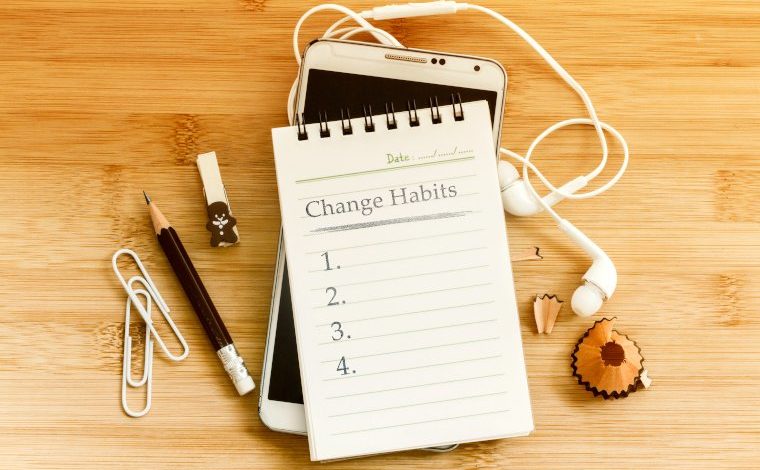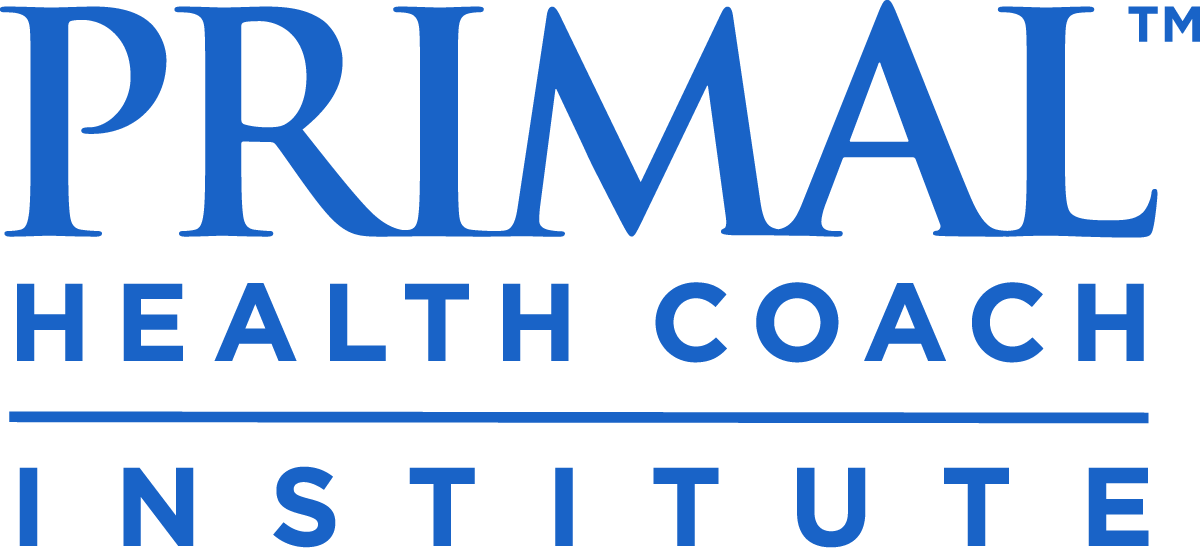
You know your stuff, you’re an all-around awesome coach, and you’re ready to change lives. But just because you’re ready for change doesn’t mean your clients are. Even the most educated and experienced health coach can’t make someone put down their favorite Standard-American-Diet food-of-choice and start a fitness regimen if they don’t want to.
That’s because you can’t just know what to say—you have to know the best way to say it.
Asking your clients the right questions is important. However, you also need to know the most effective ways to interact with them. If you’re enrolled in the Primal Health Coach Institute, you may have seen the recent updates we’ve made to the curriculum, which dive into proven techniques to inspire behavior changes in your clients. If not, read on, because in today’s post we’ll be highlighting 5 powerful behavior change theories that will make you a more effective health coach, including:
- The Transtheoretical Model
- Self-Determination Theory
- Social Cognitive Theory
- Motivational Interviewing
- Appreciative Inquiry
What’s the Transtheoretical Model?
The long answer: Change isn’t something that happens instantly; it requires time, commitment, and the right guidance. That’s the idea behind the Transtheoretical Model (TTM)—and it’s the reason we recommend PCHI graduates package their coaching services into a program that’s at least 3 months long.
Developed by researchers in the late 1970s, this technique is based on the premise that change is a cyclical process (versus a one-time act). It relies on a person’s commitment to change and the willingness to make decisions accordingly throughout the different ‘stages of change’ cycle, which are:
- Precontemplation. Your clients are likely ignoring their health challenges at this point, or they’re not aware of the consequences of their poor eating habits or sedentary lifestyle.
- Contemplation. Here, they start to see the benefits of making a change, but still feel ambivalent about actually doing it.
- Preparation. Your clients are sold on the idea that changing their behavior can lead to better health and are gearing up to take action (i.e. putting down the cookies and picking up some weights).
- Action. They’re leaving old habits behind and are all-in on embracing healthier lifestyle choices.
- Maintenance. Your clients are keeping up with the changes they’ve integrated and resisting the temptation to slip back into previous habits (and previous stages).
- Termination. This is the ultimate goal of a health transformation, where your clients have no desire to go back to their old ways.
The path to change isn’t as simple as going from A to B though, since reverting to old habits is extremely common. Relapses are usually influenced by decisional balancing (weighing the pros and cons of the change) and self-efficacy, which reflects how confident your clients are in their ability to change, even when the going gets tough.
The short answer: In TTM, you’re guiding your clients through the different stages of the change cycle to achieve long-term success.
What’s Self-Determination Theory?
The long answer: The more determined your clients are, the more likely they are to stick with a change and reach their health goals—that’s what Self-Determination Theory (SDT) is all about. And according to the researchers who came up with it, people become determined when three specific psychological needs are satisfied:
- The need for competence. Your clients will feel competent when they master a skill or behavior, when they take responsibility for their health, or when their actions have a positive effect on others.
- The need for connectedness. Encourage your clients to enlist the support of their friends and family as they work toward their health goals. This will help create a feeling of belonging.
- The need for autonomy. People want to be in control of their behaviors and goals. The act of being involved in the changes they’ll be making (choosing when they exercise or what recipes they make) plays a huge role in how motivated they are.
These psychological needs can be met by both internal motivators like participating in activities your clients enjoy, and external motivators like reward systems or a lower number on the scale. As a health coach, you can help your clients foster their own self-determination by providing positive feedback, facilitating relationships with like-minded clients, and letting them have a say in what habits they’re changing.
The short answer: With SDT, you’re helping your clients find the internal and external motivators that will keep their determination strong as they work toward their goals.
What’s Social Cognitive Theory?
The long answer: This theory is based on the idea that when people (i.e. your clients) watch someone else model a behavior and witness the consequences (good or bad), they use that information to guide their own behaviors. Sometimes it even prompts them to make a change they’ve attempted before. As their health coach—you get to be the conductor of that change.
Social Cognitive Theory (SCT) is broken down into six key aspects:
- Reciprocal Determinism. This is the foundation of SCT, and it’s about how clients’ behaviors are influenced by their own experiences and personality as well as their social environment—it’s a reciprocal relationship.
- Observational Learning. By being a role model for your clients (eating an ancestral diet, lifting heavy, getting enough sleep), you allow them to observe your actions and then model them.
- Self-Efficacy. If your clients are confident that they can make a behavior change and get positive results, they’re more likely to do it. You can encourage their success by helping them set small, attainable goals.
- Behavioral Capability. A client’s behavioral capacity is directly related to their knowledge and skill level. So instead of writing down the primal movements you want them to do, demonstrate them to make sure your client really understands.
- Reinforcements. Incentives that reward your client for their actions (ditching the processed food, sprinting one day a week) help reinforce their behavior changes.
- Expectations. These are usually influenced by past experiences, however, you can help manage a client’s expectations by creating realistic goals.
The short answer: Your clients will learn more quickly (and initiate their own behavior changes) by observing others and seeing the consequences of their actions.
What’s Motivational Interviewing?
The long answer: This technique shifts clients from acting wishy-washy to full-on committed by tapping into the real reasons why they want to make a change. So, if you’re working with someone who doesn’t seem ready to get healthy, this is the most effective technique you can use.
Your client probably knows that they need to avoid processed food, get off the couch, or stop burning the candle at both ends. With Motivational Interviewing (MI), you help them discover why they should do it by using these 5 key principles:
- Expressing empathy. Create a safe environment so your clients can explore their motivations for staying stuck or moving toward a healthier way of life. You’ll do this by being present, acknowledging their autonomy, and actively listening.
- Supporting discrepancies. If your clients are aware of the discrepancies between where they are and where they want to go, they’ll be more motivated to change. Asking open-ended questions is a great way to bring these to light.
- Avoiding argument. Your job isn’t to prove a point or debate about the health benefits of red meat or coconut oil, it’s to guide them toward figuring out what they need to do to make change happen.
- Rolling with resistance. If your clients are resistant to change, approach it differently. Reflect back to them what they’re saying, so they feel heard instead of acting defensive. And then, listen for change talk. Instead of “I won’t stop drinking soda…” you might start to hear, “I can start cutting back…”
- Support Self-Efficacy and Optimism. Your clients’ self-confidence may lag during the time you work together, but you can offer constant support by doing things like reminding them of their strengths, helping them brainstorm action steps to get closer to their goals, and sharing inspiring success stories.
It’s all about building trust between you and your client, uncovering the reasons why they’re not making changes, and nurturing a commitment to start taking action.
The short answer: MI helps you tap into your clients’ own desires for making changes when they’re not fully onboard with taking steps toward their goal.
What’s Appreciative Inquiry?
The long answer: It’s an approach that focuses on the things that are going right vs. ones that are going wrong (or need to be changed). With Appreciative Inquiry (AI) you’ll identify what’s working for your client, analyze why it’s working well, and then have them do more of it.
It’s based on the idea that we grow in the direction of where we put our attention. And when we inquire about and celebrate past and present strengths and wins, we help our clients become more successful in the long-term.
The four stages you’ll take your clients through using AI are:
- Discover. Here’s where you’ll gather information about your clients’ successes and see what’s working. Maybe they’ve already given up fast food, or they have a gym routine down. Inquire about the positives in their life.
- Dream. In this stage, your clients will visualize what’s possible for them. How do they want things to be in the future? Do they want to fit in an airplane seat better? Live to see their grandkids go to college? Get off their medications for good?
- Design. How will these ideas be put into action? In the Design phase, you’ll help your clients figure out what their next steps are. They might decide to clear all the processed food out of the house, or look up paleo recipes that sound interesting.
- Deliver. This stage is about doing. You’ll be empowering your clients to carry their ideas forward, guiding them to complete the action steps they created in the Design phase.
The short answer: Instead of fixing what’s “wrong,” AI focuses on your clients’ strengths and successes to encourage more positive behaviors.
Conclusion
It’s not just about saying the right things to your clients, it’s about knowing the right way to say it. If you like the idea of empowering your clients to find their own motivation, you might try Self-Determination Theory. Or maybe you’re more of a “focusing on the positive” kind of coach. If that’s the case, you may like using Appreciative Inquiry. Or you could choose aspects from each theory based on your clients’ individual needs and your communication style.
There’s no wrong answer.
No matter what your coaching preference is, these 5 behavior change theories will help you become a more effective health coach so your clients can more effectively reach their goals.



